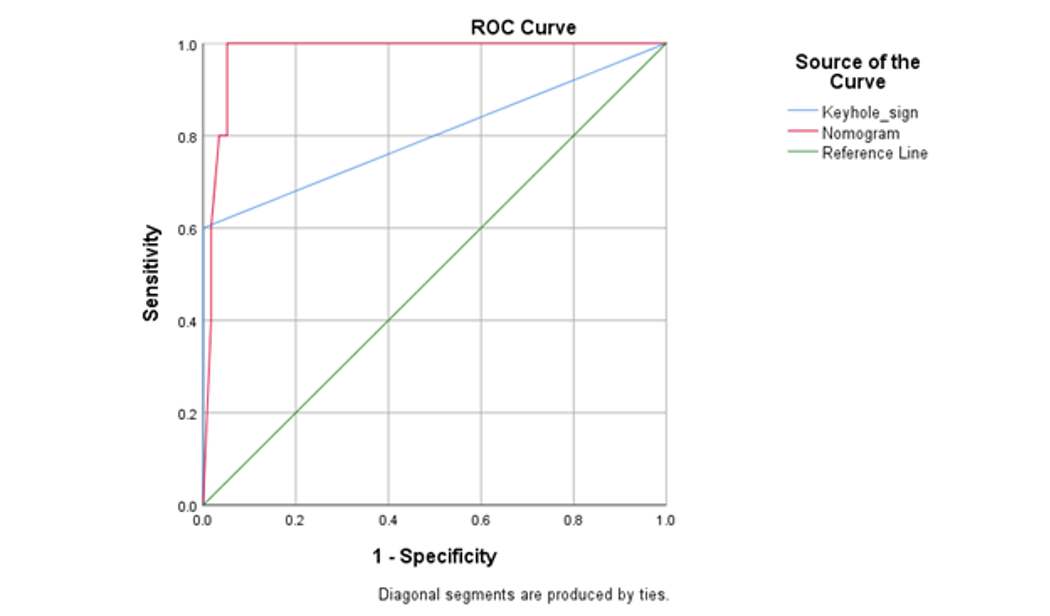Back
Poster, Podium & Video Sessions
Moderated Poster
MP17: Pediatric Urology: Upper & Lower Urinary Tract
MP17-05: Configuration and Validation of the Toronto Nomogram of Antenatal ultrasound index generated from Bayesian Meta-regression analysis in Predicting Posterior Urethral Valves (PUV)
Friday, May 13, 2022
4:30 PM – 5:45 PM
Location: Room 225
Michael Chua, Jin Kyu (Justin) Kim*, Tim Van Miegham, Joana Dos Santos, Eric Mackay, Lauren Erdman, Marta Skreta, Daniel Keefe, Marisol Lolas, Priyank Yadav, Armando Lorenzo, Mandy Rickard, Toronto, Canada

Jin Kyu (Justin) Kim, MD
University of Toronto
Poster Presenter(s)
Introduction: The keyhole sign is considered to be suggestive of a postnatal diagnosis of PUV; however, reliance on this sign may lead to missed diagnoses. Herein, we configured a nomogram using antenatal indices generated from a Bayesian meta-regression analysis and performed a validation study to assess the diagnostic accuracy of the nomogram in comparison to the keyhole sign in predicting a post-natal diagnosis of PUV.
Methods: Antenatal ultrasound indices identified by the Bayesian Meta-regression analysis that were highly predictive of PUV were oligohydramnios, bilateral hydronephrosis, bilateral ureteral dilatation, megacystis, bladder thickening and urinoma. The nomogram was configured as an electronic calculator with the baseline 6% PUV incidence among male fetus with moderate to severe hydronephrosis. The pooled diagnostic odds-ratio generated for each diagnostic index was used as coefficient factor for the nomogram configuration. Using our institutional prenatal consultation database (March 2020-present) validation of the configured nomogram in contrast to the keyhole sign was performed.
Results: Based on 63 antenatal consults for male infants with moderate to severe-hydronephrosis, the keyhole sign has a specificity of 100% (95% CI 93.8- 100%) and sensitivity of 60% (95% CI 14.7-94.7), while the nomogram has specificity of 96.55 (5% CI 88.1- 99.6%) and sensitivity of 80 (95% CI 28.4-99.5%). The keyhole sign had 2 false negatives and the nomogram had 2 false positives. The ROC, showed that the nomogram had a superior AUC than the keyhole sign (0.978 vs 0.800, respectively, Figure). The suggested cut-off using Youdin's index for the nomogram was 95% probability to prevent false positives. The calculated NNS was 1.6 for the Keyhole sign and 1 for the nomogram.
Conclusions: This pilot validation study determined that the Toronto antenatal ultrasound indices nomogram calculator for PUV has similar, if not better, diagnostic accuracy than the keyhole sign. Given the long-term implication of missing a PUV diagnosis, the nomogram can be an adjunctive diagnostic tool to trigger additional post-natal screening for patients do not present with classic keyhole sign but have high index of suspicion.
Source of Funding: None

Methods: Antenatal ultrasound indices identified by the Bayesian Meta-regression analysis that were highly predictive of PUV were oligohydramnios, bilateral hydronephrosis, bilateral ureteral dilatation, megacystis, bladder thickening and urinoma. The nomogram was configured as an electronic calculator with the baseline 6% PUV incidence among male fetus with moderate to severe hydronephrosis. The pooled diagnostic odds-ratio generated for each diagnostic index was used as coefficient factor for the nomogram configuration. Using our institutional prenatal consultation database (March 2020-present) validation of the configured nomogram in contrast to the keyhole sign was performed.
Results: Based on 63 antenatal consults for male infants with moderate to severe-hydronephrosis, the keyhole sign has a specificity of 100% (95% CI 93.8- 100%) and sensitivity of 60% (95% CI 14.7-94.7), while the nomogram has specificity of 96.55 (5% CI 88.1- 99.6%) and sensitivity of 80 (95% CI 28.4-99.5%). The keyhole sign had 2 false negatives and the nomogram had 2 false positives. The ROC, showed that the nomogram had a superior AUC than the keyhole sign (0.978 vs 0.800, respectively, Figure). The suggested cut-off using Youdin's index for the nomogram was 95% probability to prevent false positives. The calculated NNS was 1.6 for the Keyhole sign and 1 for the nomogram.
Conclusions: This pilot validation study determined that the Toronto antenatal ultrasound indices nomogram calculator for PUV has similar, if not better, diagnostic accuracy than the keyhole sign. Given the long-term implication of missing a PUV diagnosis, the nomogram can be an adjunctive diagnostic tool to trigger additional post-natal screening for patients do not present with classic keyhole sign but have high index of suspicion.
Source of Funding: None


.jpg)
.jpg)